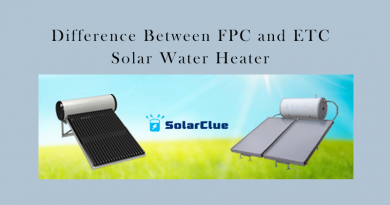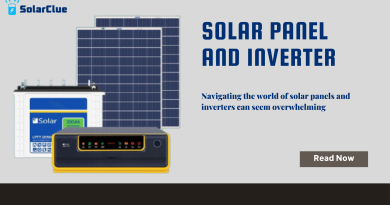Can You Use A Pressure Washer To Clean Solar Panels
Cleaning solar panels is essential for maintaining their efficiency and longevity. While there are various methods to clean solar panels, using a pressure washer is a popular option due to its effectiveness in removing dirt and debris. However, pressure washing must be done correctly to avoid damaging the panels. This guide explores the benefits and drawbacks of pressure washing, the right equipment to use, safety precautions, and step-by-step instructions for effectively cleaning your solar panels.
Table of Contents
- 0.1 1. The Benefits and Drawbacks of Using a Pressure Washer for Solar Panel Cleaning
- 0.2 2. Choosing the Right Pressure Washer and Nozzle Type
- 0.3 3. Safety Precautions When Using a Pressure Washer
- 0.4 4. Step-by-Step Instructions for Cleaning Solar Panels with a Pressure Washer
- 0.5 5. Troubleshooting Common Issues and Potential Damage
- 0.6 6. Comparing Pressure Washing to Other Cleaning Methods
- 0.7 7. The Impact of Pressure Washing on Solar Panel Efficiency and Lifespan
- 0.8 8. The Role of Solar Panel Warranties in Covering Cleaning Damage
- 0.9 9. Case Studies of Successful Solar Panel Cleaning with a Pressure Washer
- 1 FAQs About Using a Pressure Washer to Clean Solar Panels
- 2 Table: Comparing Solar Panel Cleaning Methods
1. The Benefits and Drawbacks of Using a Pressure Washer for Solar Panel Cleaning
Benefits:
- Effective Cleaning: Pressure washers are highly effective at removing dirt, grime, bird droppings, and other debris from solar panels, which can significantly improve their efficiency.
- Time-Saving: Pressure washing is faster than manual cleaning methods, especially for large installations.
- Water Efficiency: Pressure washers use less water compared to traditional hose cleaning due to the high pressure, making it an eco-friendly option.
Drawbacks:
- Risk of Damage: Using a pressure washer with too high pressure or the wrong nozzle can crack or damage the solar panels, seals, or wiring.
- Safety Concerns: Handling a pressure washer on a roof or elevated area can be hazardous if proper safety measures are not taken.
- Potential Voiding of Warranties: Some solar panel warranties may not cover damage caused by pressure washing, so it’s essential to check your warranty before proceeding.
2. Choosing the Right Pressure Washer and Nozzle Type
- Pressure Settings: Solar panels are delicate, and using too much pressure can cause damage. It’s recommended to use a pressure washer with a setting of no more than 1,500 PSI (pounds per square inch) to safely clean solar panels.
- Nozzle Type: Use a wide-angle spray nozzle, such as a 40-degree nozzle, to distribute the pressure evenly and reduce the risk of damage. Avoid using a zero-degree or narrow-angle nozzle, as these can concentrate the pressure too much on a small area.
- Water Temperature: Use cold or lukewarm water. Hot water can cause thermal stress on the panels, potentially leading to cracking or other damage.
3. Safety Precautions When Using a Pressure Washer
- Use Proper Safety Gear: Wear non-slip shoes, gloves, and eye protection when using a pressure washer to prevent accidents and protect yourself from debris.
- Secure the Area: Ensure the area around the panels is secure, and there are no loose objects that could be blown away by the pressure washer. If you’re working on a roof, use a harness or secure footing to prevent falls.
- Avoid Electrical Components: Be cautious around electrical wiring and connectors. Direct water away from these areas to avoid short circuits or other electrical hazards.
- Check the Weather: Avoid cleaning solar panels in high winds, rain, or extreme temperatures to reduce the risk of accidents and ensure effective cleaning.
4. Step-by-Step Instructions for Cleaning Solar Panels with a Pressure Washer
- Prepare the Equipment: Set the pressure washer to the recommended pressure (no more than 1,500 PSI) and attach the appropriate nozzle (40-degree or wider).
- Pre-Rinse the Panels: Start by rinsing the panels with water to remove loose dirt and debris. This can help reduce the amount of scrubbing required.
- Apply Cleaning Solution (Optional): If the panels are particularly dirty, you can apply a mild, biodegradable cleaning solution specifically designed for solar panels. Avoid using harsh chemicals or abrasive cleaners.
- Pressure Wash the Panels: Starting from the top of the panel, spray water in a downward motion, moving across the surface in a consistent pattern. Keep the nozzle at least 6 to 12 inches away from the surface to prevent damage.
- Rinse Thoroughly: After cleaning, rinse the panels thoroughly with clean water to remove any remaining soap or residue.
- Inspect the Panels: Once dry, inspect the panels for any signs of damage, such as cracks or loose wiring, and ensure that they are clean and free of debris.
5. Troubleshooting Common Issues and Potential Damage
- Water Spots: If water spots appear after cleaning, rinse the panels again with distilled water to prevent mineral deposits from forming.
- Reduced Efficiency: If you notice a drop in panel efficiency after cleaning, inspect the panels for damage. Pressure washing can sometimes dislodge connections or cause micro-cracks.
- Physical Damage: Look for signs of cracking, delamination, or sealant damage after using a pressure washer. If any damage is found, consult a professional for repairs.
6. Comparing Pressure Washing to Other Cleaning Methods
| Cleaning Method | Benefits | Drawbacks | Best For |
|---|---|---|---|
| Pressure Washing | Fast, effective, water-efficient | Risk of damage, potential warranty issues | Large or heavily soiled installations |
| Manual Cleaning with Water | Gentle, no risk of pressure damage | Time-consuming, requires more water | Small or easily accessible panels |
| Robotic Cleaners | Automated, minimal human intervention | High initial cost, limited availability | Commercial installations |
| Professional Cleaning | Expertise and specialized equipment | Expensive, scheduling required | Complex or high-risk installations |
7. The Impact of Pressure Washing on Solar Panel Efficiency and Lifespan
- Efficiency: Regular cleaning, including pressure washing when done correctly, can help maintain the efficiency of solar panels by ensuring that dirt and debris do not obstruct sunlight. However, improper pressure washing can reduce efficiency by damaging the surface or electrical components.
- Lifespan: Properly maintained solar panels, including those cleaned with a pressure washer, can last 25 years or more. However, using incorrect pressure settings or nozzles can cause micro-cracks and other damage, potentially shortening the panels’ lifespan.
8. The Role of Solar Panel Warranties in Covering Cleaning Damage
Before using a pressure washer, check your solar panel warranty:
- Coverage: Most warranties cover manufacturing defects and performance but may exclude damage caused by improper cleaning methods, including high-pressure washing.
- Guidelines: Follow the manufacturer’s cleaning guidelines closely to avoid voiding your warranty. If pressure washing is not recommended, consider alternative cleaning methods.
- Consult the Installer: If in doubt, consult your solar panel installer for advice on cleaning methods that comply with your warranty terms.
9. Case Studies of Successful Solar Panel Cleaning with a Pressure Washer
- Residential Solar Installation: A homeowner successfully used a pressure washer with a 40-degree nozzle and 1,200 PSI to clean their rooftop solar panels. The panels showed a 10% increase in efficiency after cleaning, with no signs of damage.
- Commercial Solar Farm: A large solar farm employed pressure washing using specialized equipment with adjustable pressure settings to clean extensive panel arrays. The cleaning resulted in improved energy output, with no damage reported.
FAQs About Using a Pressure Washer to Clean Solar Panels
Q1: Can I use any pressure washer to clean my solar panels?
A1: Not all pressure washers are suitable. Use a pressure washer with a setting no higher than 1,500 PSI and a wide-angle nozzle to avoid damaging the panels.
Q2: What are the risks of using a pressure washer on solar panels?
A2: The risks include cracking the panels, damaging the seals or wiring, and potentially voiding the warranty if incorrect settings or techniques are used.
Q3: How often should I clean my solar panels with a pressure washer?
A3: It depends on your location and the amount of debris that accumulates. In most cases, cleaning every six months to a year is sufficient, but more frequent cleaning may be needed in dusty or heavily polluted areas.
Q4: Can pressure washing improve the efficiency of my solar panels?
A4: Yes, regular cleaning can help maintain the efficiency of your panels by ensuring they are free of dirt and debris that block sunlight.
Q5: What should I do if my solar panel efficiency drops after pressure washing?
A5: Inspect the panels for damage, such as cracks or loose wiring, and consult a professional if you suspect that the pressure washing caused issues.
Q6: Are there safer alternatives to pressure washing for cleaning solar panels?
A6: Yes, manual cleaning with water and a soft brush, robotic cleaners, or hiring professional cleaning services are safer alternatives.
Q7: What type of nozzle should I use for pressure washing solar panels?
A7: Use a wide-angle nozzle, such as a 40-degree nozzle, to distribute the pressure evenly and reduce the risk of damaging the panels.
Q8: Does pressure washing affect the warranty on solar panels?
A8: It can, especially if the manufacturer’s guidelines do not recommend pressure washing. Always check your warranty before using a pressure washer.
Table: Comparing Solar Panel Cleaning Methods
| Cleaning Method | Time Required | Cost | Risk of Damage | Water Usage |
|---|---|---|---|---|
| Pressure Washing | Fast | Moderate | Medium-High | Low |
| Manual Cleaning with Water | Slow | Low | Low | High |
| Robotic Cleaners | Fast | High | Low | Low |
| Professional Cleaning | Varies | High | Low | Varies |


